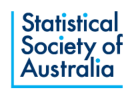SCV proudly presents Reproducible Reporting, Academic Papers, Presentations and Theses with Quarto.
In an era where transparency, collaboration, and reproducibility are central to trustworthy research and data-driven decision-making, the ability to produce well-documented, reproducible outputs is essential. This tutorial introduces practical tools and workflows that help you create high-quality, shareable research products—from analysis reports and academic papers to engaging presentations. Using R and Quarto, you’ll learn how to structure projects for reproducibility, integrate code with narrative, and produce outputs that are both visually polished and methodologically transparent. These skills not only support better science, but also make your work easier to update, easier to share, and more impactful.
Presenters:
-
Krisanat Anukarnsakulchularp is a first year PhD student. He is working on a graph data structure to help betters understand and explore the spatio-temporal multivariate network data.
-
Jayani Lakshika is a final year PhD student. She is working on methods to help decide on the best nonlinear low dimensional representation of high dimensional data, and is the author of several R packages.
-
Janith Wanniarachchi is a second year PhD student. Previously he has worked at Appsilon as an R/Shiny Developer and as a software developer in the data science industry. His current research is on building interactive tools to understand how AI models work.
The team is being mentored for this tutorial by Professor Di Cook.
Background:
You should have a basic understanding of R to the level of working after reading R4DS and possibly some knowledge of quarto or RMarkdown. You are a researcher wishing to improve your skills in reproducible reporting of data analysis, or a PhD student ready to embark on publishing your research, or a data analyst preparing regular reports. Some understanding of html and css is helpful but not required.
Structure of tutorial:
Session 1 (Reproducible data analysis reports)
This session will guide you through creating a reproducible project, starting with creating an R project and organising files. Then, work through the Quarto components metadata (YAML), text (formatted with Markdown) and code (code formatting). You will also learn about the quarto templates, which allow you to start a project with example content and options.
| Topic |
Description |
| Introduction |
What is reproducible research, and how do the tools we’ll learn today help. |
| Getting started |
Structuring project to support reproducibility, and creating your first dynamic, reproducible document. |
| Quarto details |
Learn about the Quarto document, the structure and its components, different types of outputs. Incorporating data, code chunks, plots and tables. |
| Quarto templates |
A brief introduction to templates and how to use them, and making modifications. |
Session 2 (Writing academically)
This session guides you on creating journal papers and theses with Quarto, managing bibliographies, and adding code, equations, figures, and tables for reproducible, well-formatted documents.
| Topic |
Description |
| Quarto template for Journal paper |
How to work with existing journal templates using Quarto to format, style, and structure your paper. |
| Monash Quarto thesis template |
How to create and format your thesis using the Monash Quarto template. |
| Bibliography |
How to manage and format references and citations in Quarto with practical examples. |
| More exercises on adding code chunks, equations, figures, and tables |
Exercises that demonstrate adding code, equations, plots, and tables in Quarto documents for reproducible research. |
Session 3 (Engaging reproducible presentations)
This session will be giving a high level introduction to building presentations, mainly reveal.js presentations. By the end of this session you will gain the knowledge to develop and customize engaging presentations to your needs.
| Topic |
Description |
| Introduction |
Explores different presentation output types and how you can go from zero to sharing your first presentation in 15 mins. |
| Images, Code and Positioning |
Adding images, code examples and output while managing the layout of presentations. |
| Useful tools to supercharge your presentation |
Speaker view, Chalkboards, Multiplexer and other fun tools to add to your toolbelt. |
| Theming |
Adding that personal touch to your presentations to take it from zero to fabulous. |
| Animations |
Introducing animations and how they can be used without too much of a hassle. |
Cancellation Policy:
Occasionally courses have to be cancelled due to a lack of subscription. Early registration ensures that this will not happen.
Cancellations received prior to two weeks before the event will be refunded, minus the Stripe processing fee (1.75% + $0.30 per transaction) and an SSA administration fee of $20.
From then onward no part of the registration fee will be refunded. However, registrations are transferable within the same organisation. Please advise any changes to events@statsoc.org.au.
